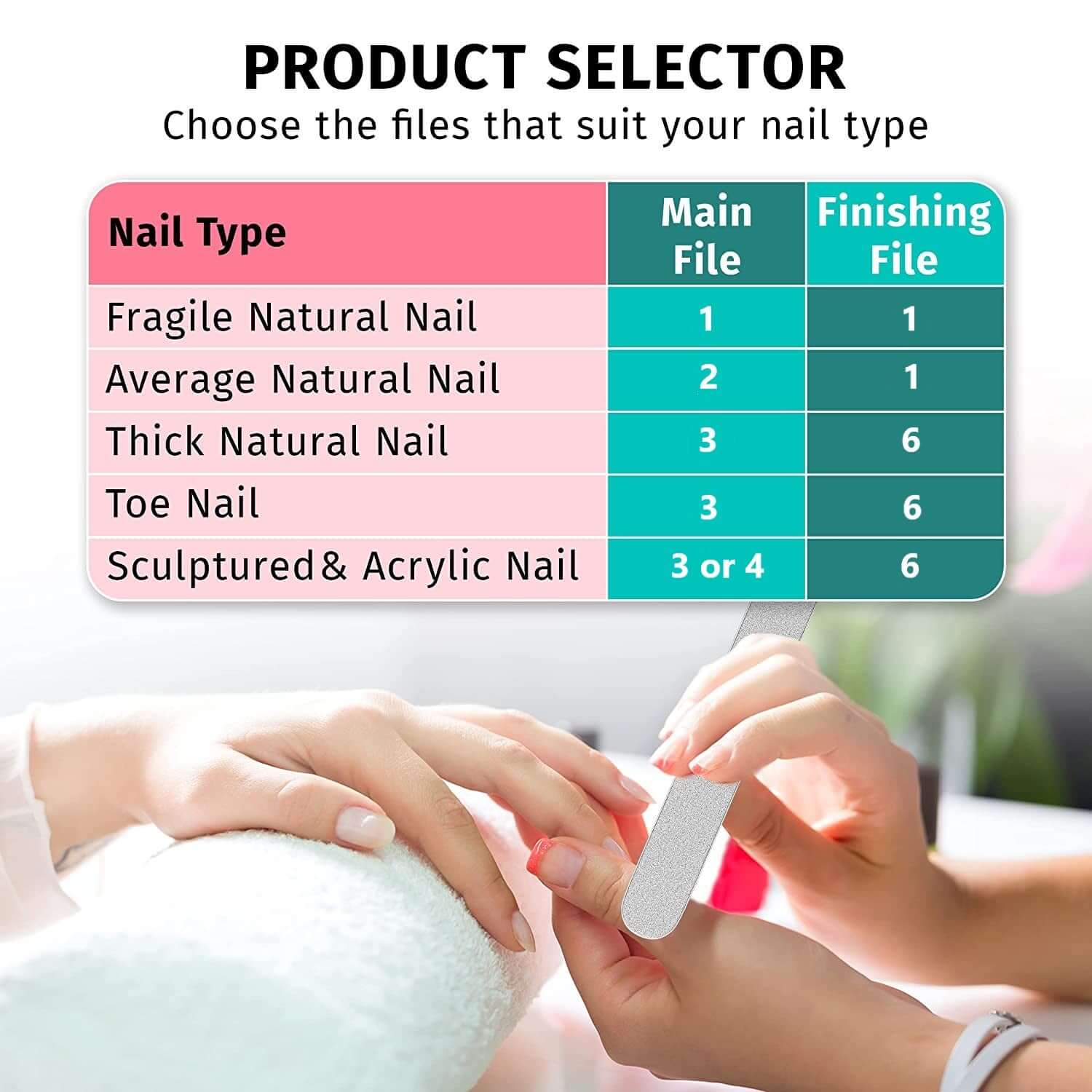
Choosing the right Diamancel nail file
It is important to know your nails well, to choose the right nail file.
Here are the different categories of nails that can be found:
- thin, soft, brittle, brittle or diseased natural nails
- natural nails of medium thickness
- thick natural nails
- toenails
- sculpted nails, resin, gel, false nails, acrylic
Choose for natural nails:
If you have thin, soft, brittle or brittle natural nails , use our Diamancel file # 1. It is flexible with a fine grain for a soft, precise, smooth and uniform finish.
For natural nails of medium thickness , like most of us, use the flexible, medium grit Diamancel # 2 file . For a softer finish, finish with flexible file # 1. Alternatively to our # 2 file, the semi-flexible # 6 file can be used, a little more abrasive and less flexible.
If your natural fingernails are thick, use the flexible file #3 rough grit, then finish with the nail file # 2 medium grit. Finish with # 1 fine grain file for an even smoother finish.
As for the toenails , use the # 3 flexible, coarse-grained file. For a smooth finish, use the # 6 semi-flexible medium-grit file or the # 2 flexible medium-grit slightly finer file.
Choose for sculpted, false nails:
To shape and maintain sculpted nails, false nails in resin or gel , use the nail file #3 with coarse grain.
To file the acrylic nails, the best Diamancel manicure tool is the semi-flexible nail file #4, the extra-coarse grit. The work is easy with this nail file. It is the essential tool for a beauty professional to shape acrylic nails. Once nails are shaped, use the #6 semi-flexible medium+ grit file to smooth and hold over time.
For calluses on hands and either side of the nails , use Diamancel # 5 hand callus file. It gently but effectively removes dry skin from both sides of the nails. For beauty professionals, use this # 5 file to remove calluses before applying false nails.



